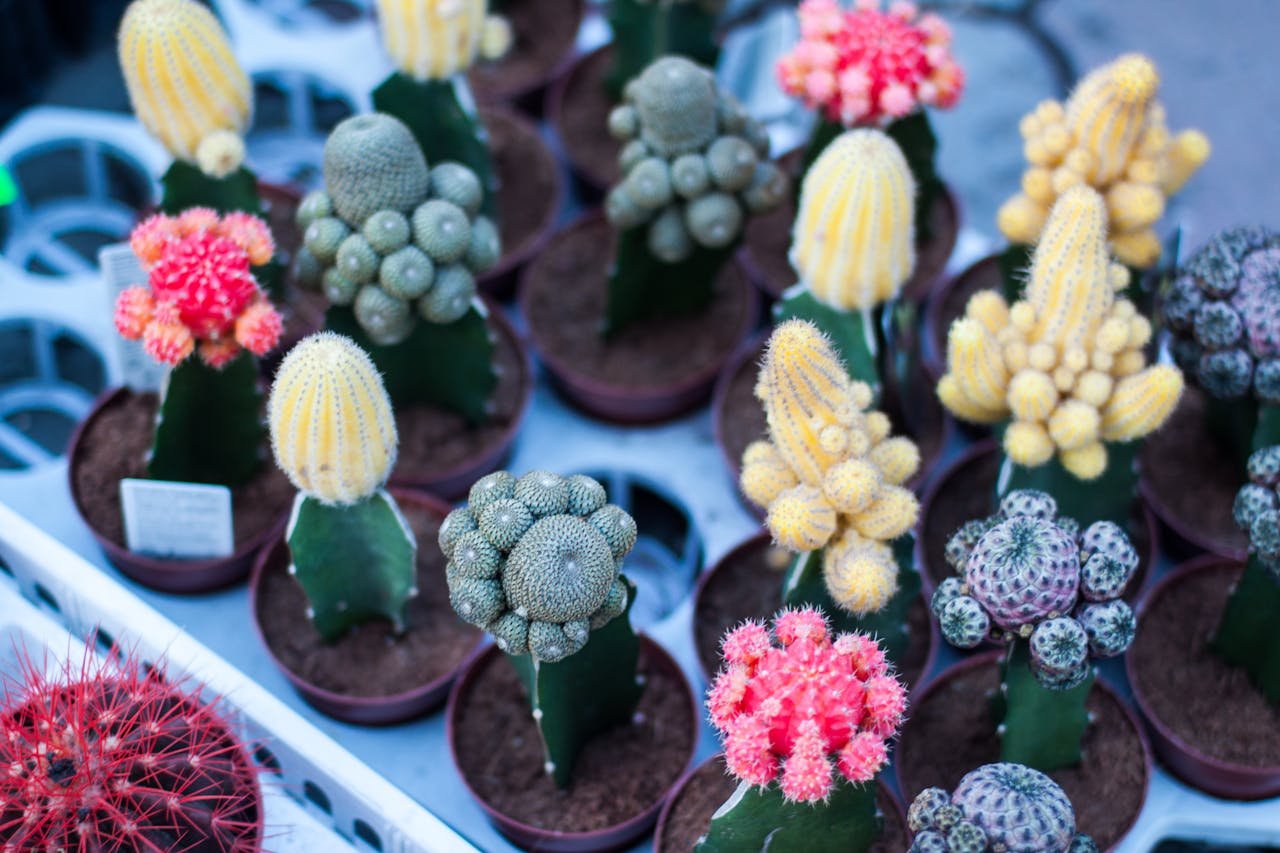Cactus plants aren’t just rugged desert survivors—they can also be stunning bloomers that brighten up your indoor space. If you’ve only seen cacti as prickly green stems, you’re in for a surprise. Many species produce jaw-dropping flowers in vibrant colors, and some even bloom multiple times a year.
In this guide, we’ll explore the best blooming cactus varieties for home, their care needs, blooming patterns, and styling ideas to transform your home into a flowering desert retreat.
Whether you live in an apartment or have a sunny balcony, you’ll find cactus blooms both practical and enchanting. Let’s dive into the most rewarding cactus plants for indoor flowering!
Why Choose Blooming Cacti for Your Home?
Blooming cacti are perfect for home gardeners who want low-maintenance plants with high impact. Unlike many flowering houseplants, most cactus species don’t need daily attention or frequent watering.
Once you understand their cycle and how to trigger blooming, you’ll be rewarded with stunning flowers that often have a short but magical blooming window.
- Minimal care, maximum beauty
- Thrive in dry indoor conditions
- Unique flowering habits (some bloom at night!)
- Excellent for beginners and collectors alike
How Cactus Blooming Works Indoors
Cactus blooming is typically tied to a natural cycle: growth in spring/summer, dormancy in winter, and flowering in late spring or summer. For some species, like the Epiphyllum oxypetalum (Queen of the Night), blooms may appear suddenly overnight!
Key factors that influence blooming:
- Light: Most cacti need bright, direct light to initiate flowers.
- Temperature: Cool winters (10–15°C or 50–59°F) help trigger spring blooming.
- Dormancy: Reduced watering and no feeding during winter encourage natural cycles.
- Maturity: Many cacti only bloom once they are 3–5 years old.
Now let’s explore the stars of the blooming cactus world!
10 Stunning Blooming Cactus Varieties for Home
1. Mammillaria
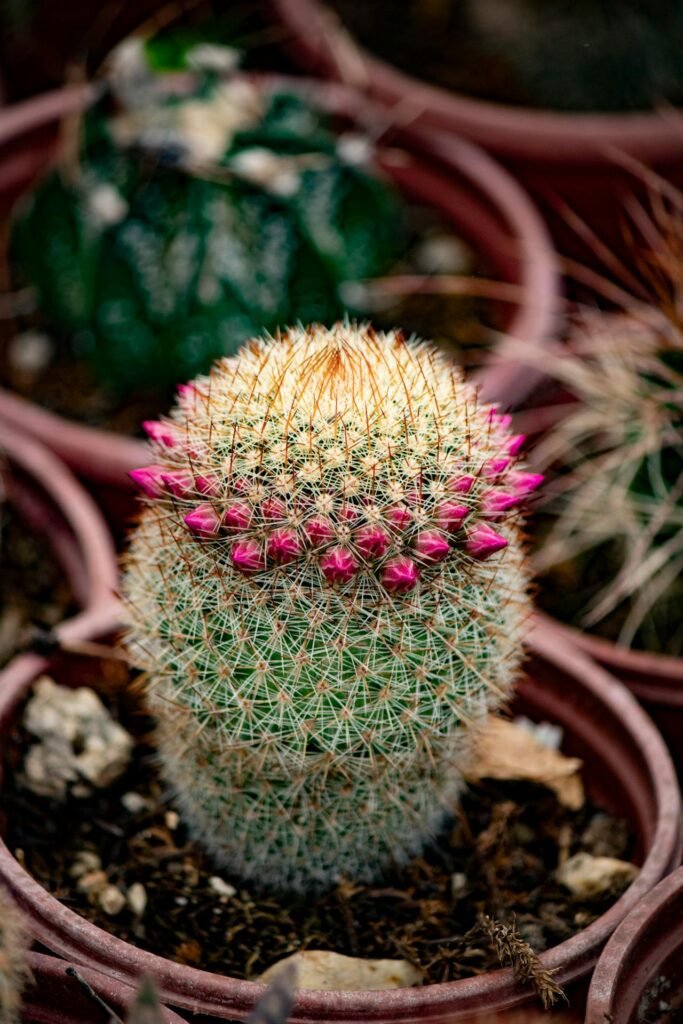
Mammillarias are compact, globe-shaped cacti often crowned with pink, red, or yellow flowers that bloom in a circle like a halo. They’re perfect for windowsills and beginners.
Care Tips:
- Needs bright light and fast-draining soil
- Water every 2–3 weeks in growing season
- Winter rest promotes heavier blooming
2. Easter Cactus (Rhipsalidopsis)
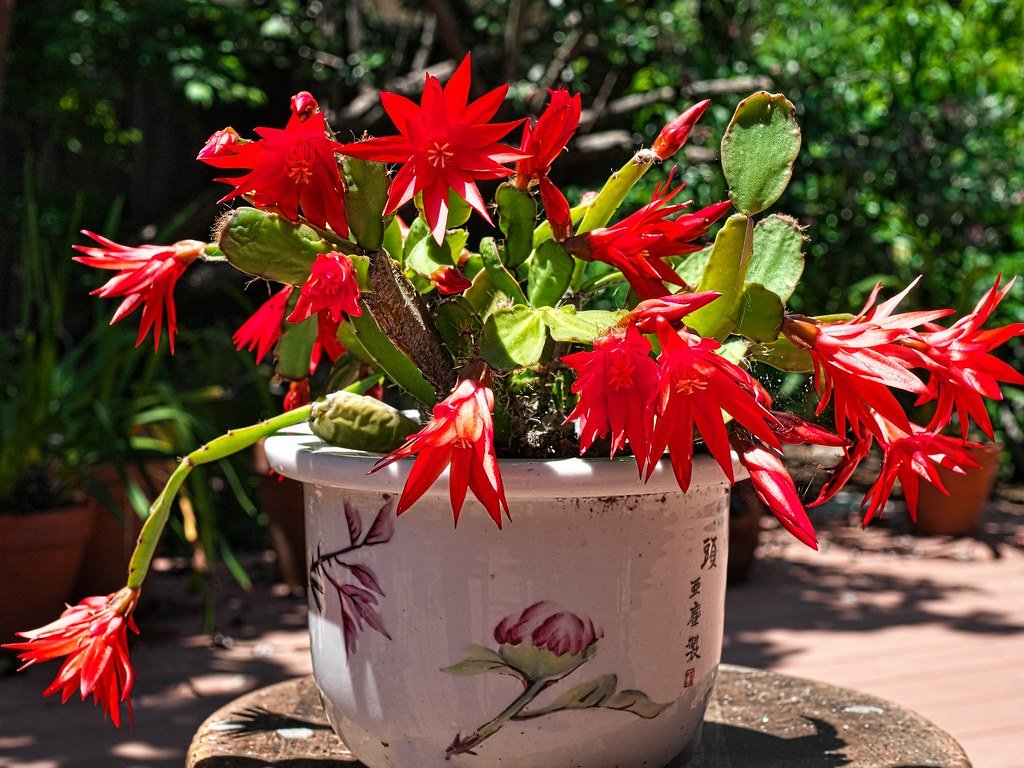
Not a desert cactus, but a forest one! The Easter Cactus blooms in spring with star-shaped flowers in red, orange, pink, or white.
Care Tips:
- Prefers indirect light and moderate humidity
- Keep soil slightly moist—not soggy
- Use a balanced fertilizer monthly during growth
3. Rebutia
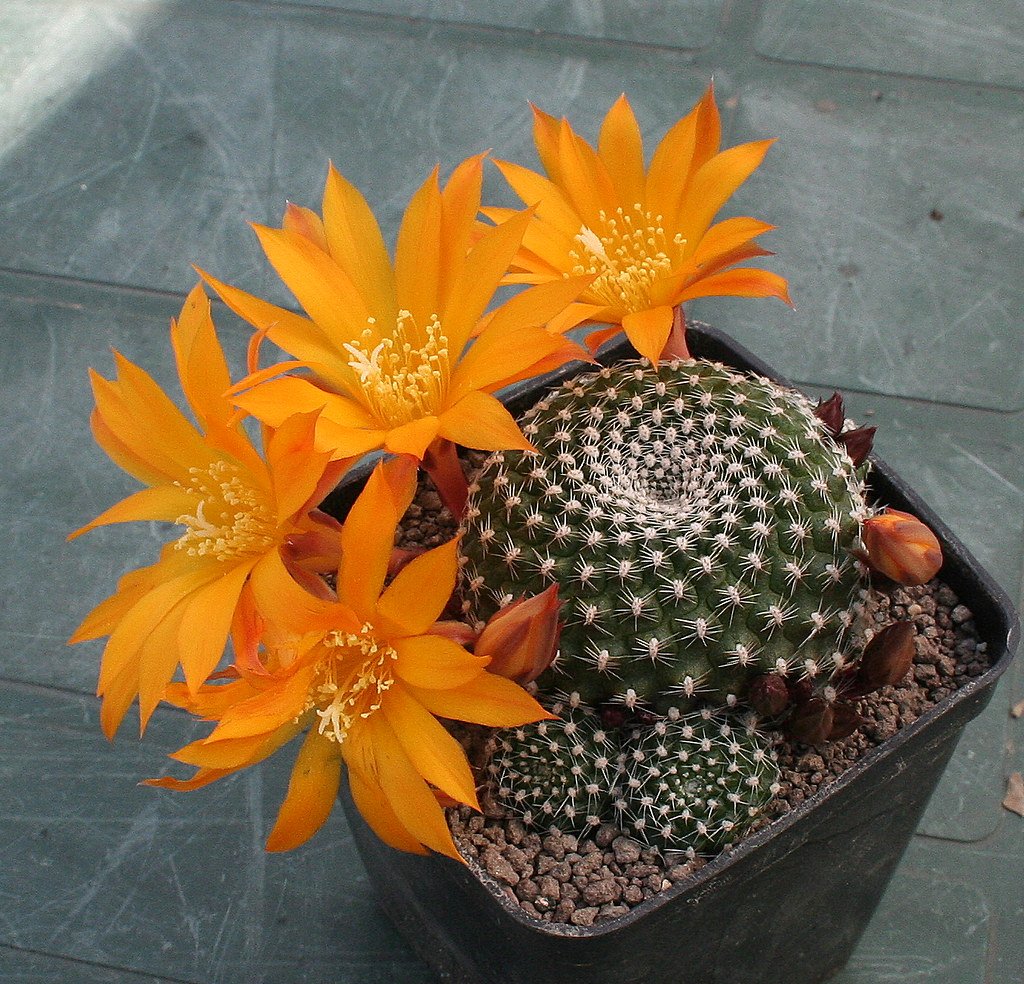
Rebutias are small, cluster-forming cacti that bloom with orange, pink, or yellow funnel-shaped flowers that often outsize the plant itself.
Care Tips:
- Loves bright indirect light
- Water when the soil is dry to the touch
- Cooler temperatures in winter aid flowering
4. Christmas Cactus (Schlumbergera)
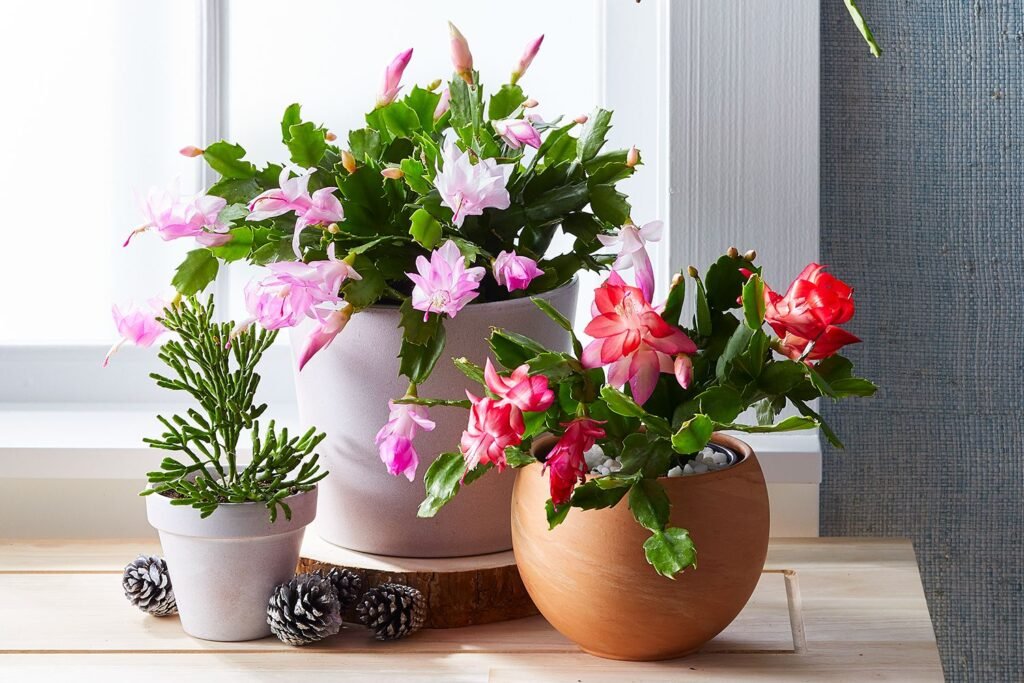
Famous for holiday blooms, this tropical cactus flowers in pink, white, red, or purple during winter when days are shorter.
Care Tips:
- Thrives in indirect light
- Likes higher humidity and slightly moist soil
- Requires 12–14 hours of darkness for 6 weeks to bloom
5. Echinopsis (Hedgehog Cactus)
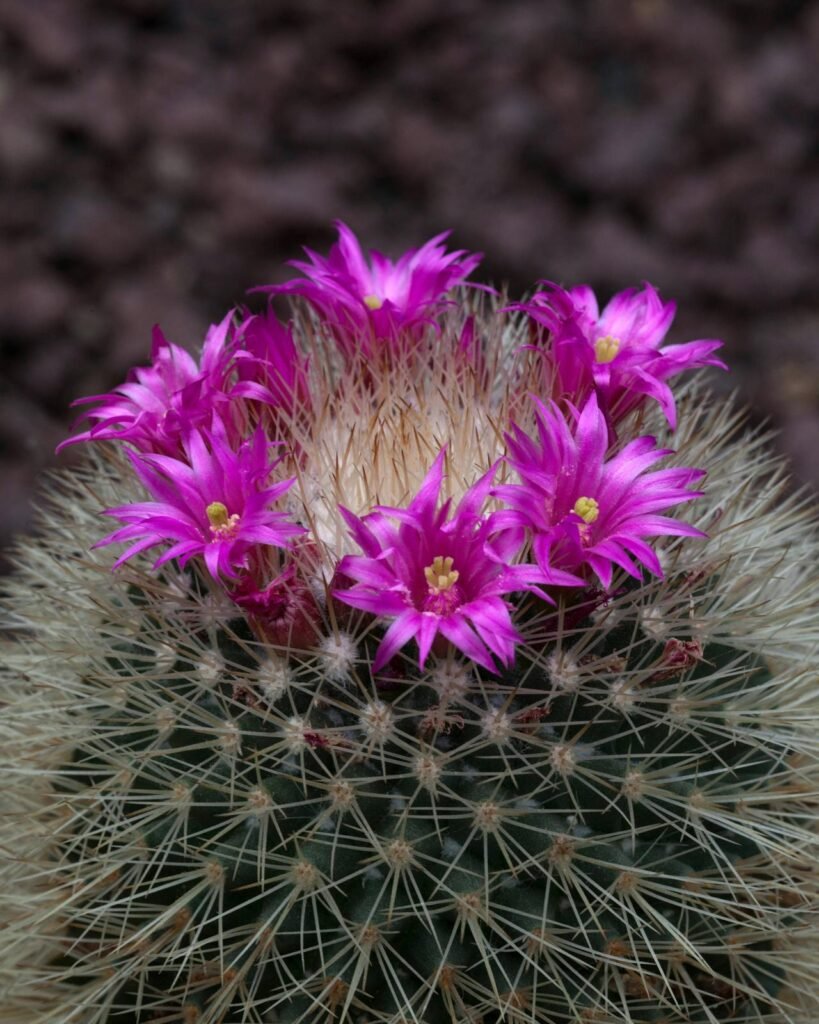
This sun-loving cactus produces large, trumpet-like blooms in dramatic colors. The flowers are short-lived but spectacular.
Care Tips:
- Full sun required for blooms
- Minimal water in winter
- Use a phosphorus-rich fertilizer in spring
6. Gymnocalycium (Chin Cactus)
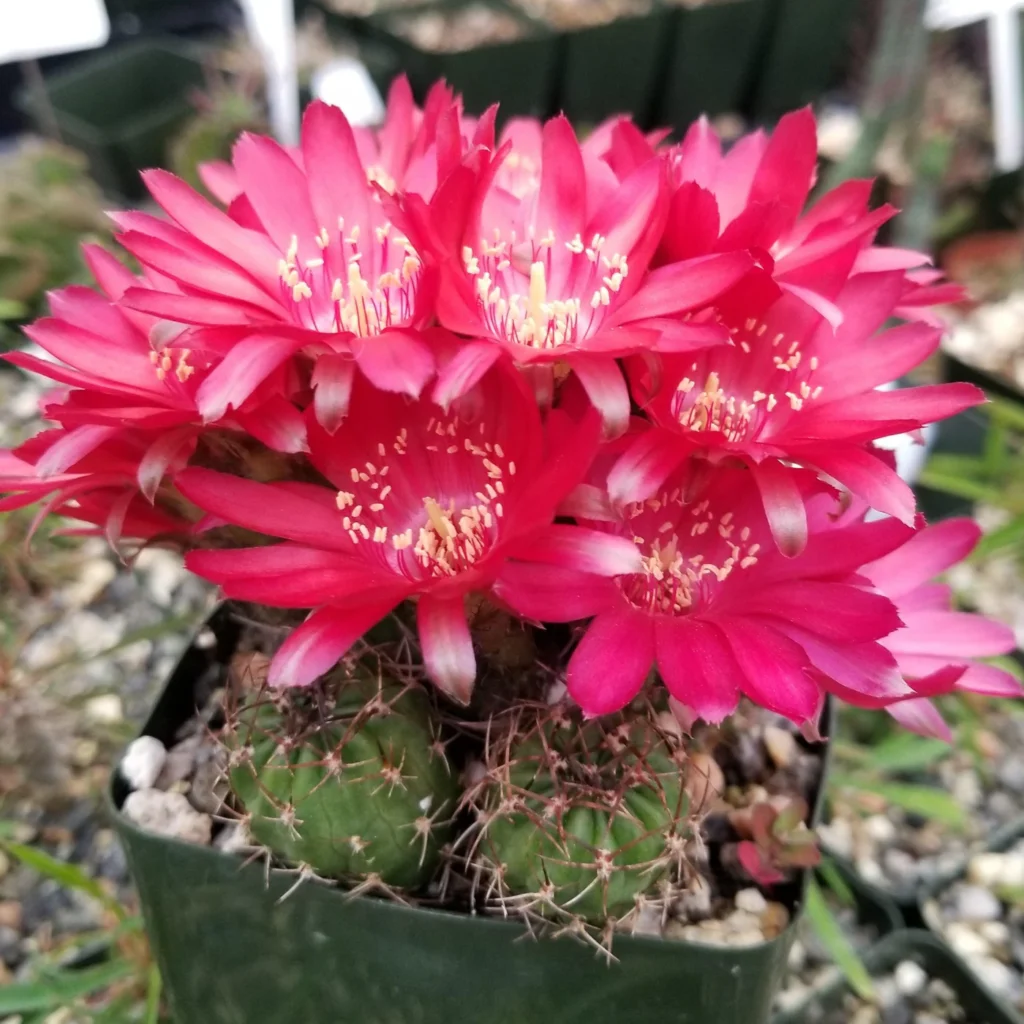
Gymnocalyciums are slow-growing but generous bloomers with delicate white, pink, or yellow flowers in spring and summer.
Care Tips:
- Needs bright light but avoids scorching midday sun
- Allow soil to dry between waterings
- Flowers repeatedly with proper rest in winter
7. Epiphyllum (Orchid Cactus)

Known for their massive, fragrant blooms, Epiphyllums produce striking pink, red, or yellow flowers that often appear at night.
Care Tips:
- Prefers filtered sunlight
- Enjoys more humidity than desert species
- Water regularly during growth, less in winter
8. Parodia
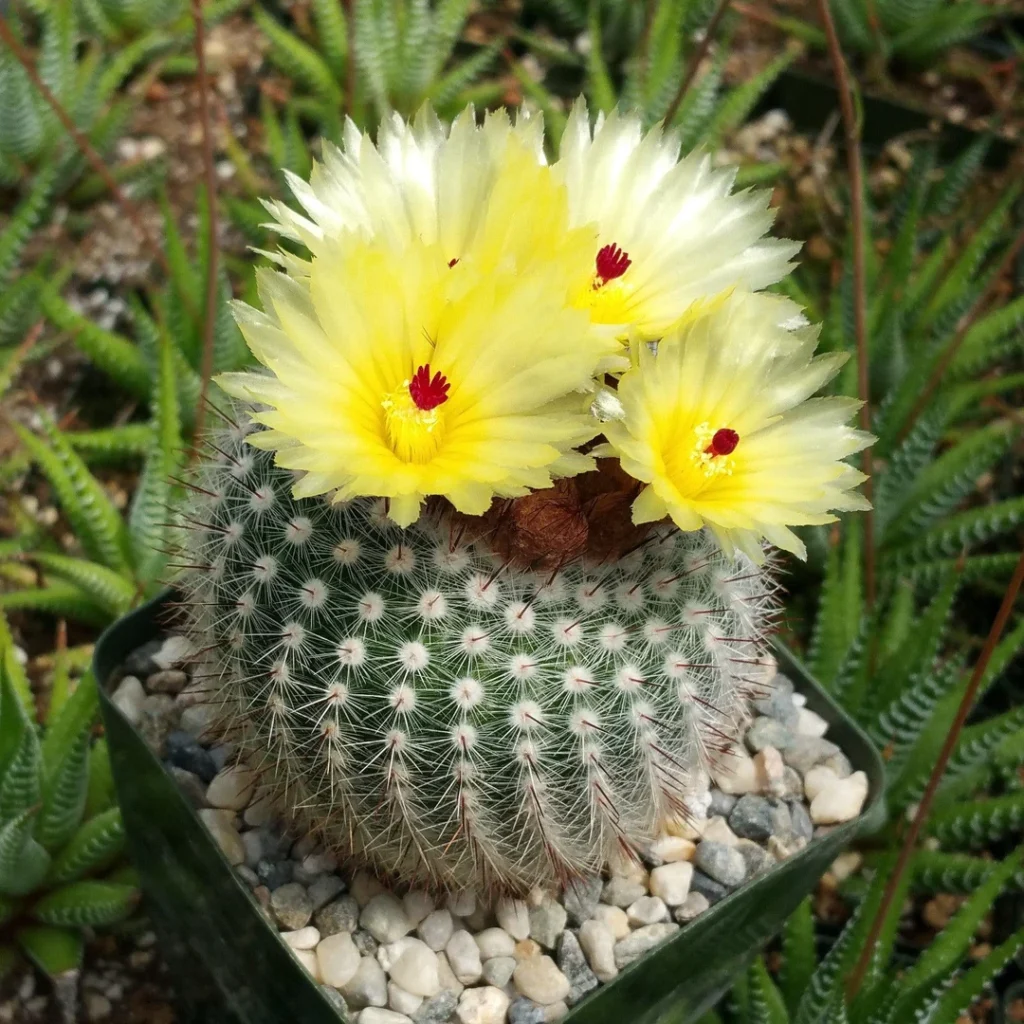
Parodia cacti are round and friendly-looking, often blooming in golden-yellow or pink hues. Great for small pots indoors.
Care Tips:
- Bright light, but not harsh sun
- Moisture during growing season
- Good air circulation prevents fungal issues
9. Notocactus (now Parodia)
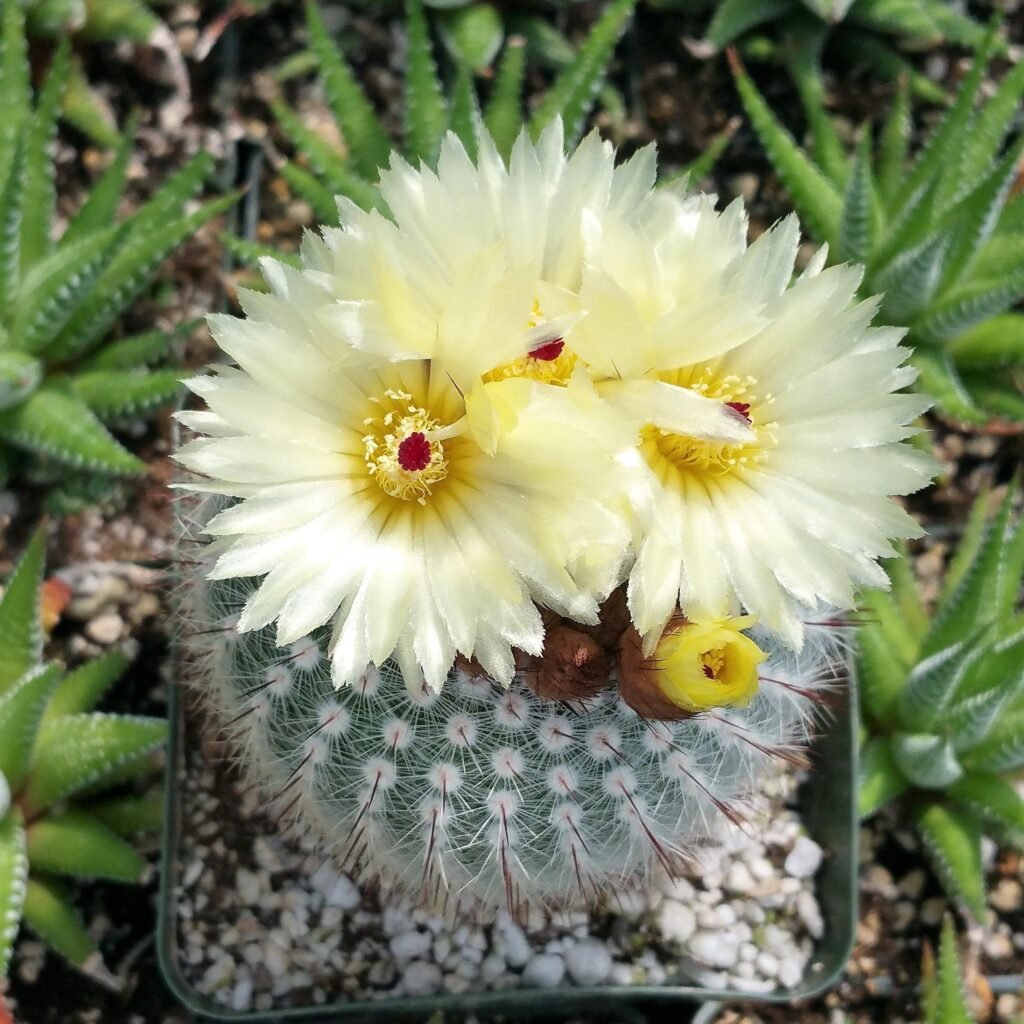
These cheerful bloomers love sunny windows and produce bright flowers with large centers, often yellow or orange.
Care Tips:
- Water deeply, but infrequently
- Needs dormancy in winter to rebloom
- Use cactus fertilizer in spring and summer
10. Queen of the Night (Epiphyllum oxypetalum)
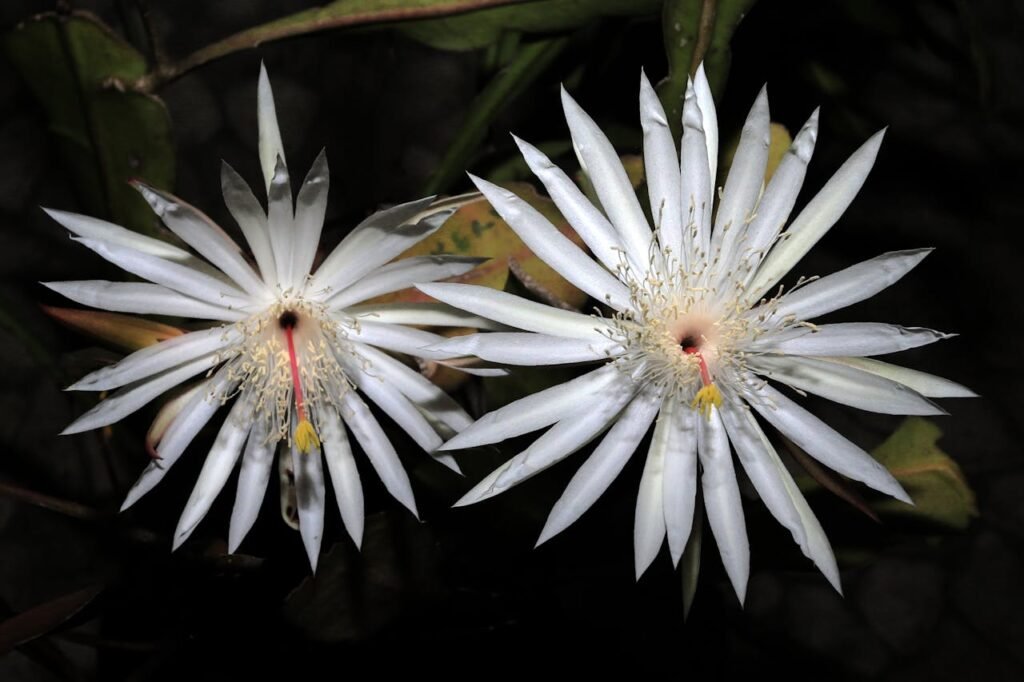
A true showstopper! This cactus blooms rarely but magnificently—large, white, fragrant flowers open only at night.
Care Tips:
- Needs warmth and humidity
- Filtered light and rich, well-draining soil
- Allow it to climb or trail
Seasonal Blooming Calendar: What to Expect and When
One of the joys of keeping flowering cacti is anticipating their unique blooming seasons. Here’s a quick breakdown of when popular varieties usually flower:
Spring Bloomers:
- Mammillaria: Small pink or white flowers in halo-like rings.
- Rebutia: Bright orange, yellow, or red blooms that can appear in clusters.
- Gymnocalycium: Surprising shades of pink and purple.
Summer Bloomers:
- Echinopsis: Huge, dramatic trumpet flowers that open in the morning and fade by evening.
- Parodia: Rounded cacti with yellow, red, or orange flowers that thrive in warmth.
Fall Bloomers:
- Schlumbergera truncata (Thanksgiving Cactus): Slightly earlier than Christmas cactus, with vivid blooms in fall.
Winter Bloomers:
- Christmas Cactus (Schlumbergera bridgesii): One of the few cacti that reliably bloom indoors during the holidays, with flowers in pink, red, white, or purple.
Knowing this calendar helps you plan care routines and possibly build a blooming schedule for year-round enjoyment.
Where to Display Blooming Cactus Indoors
For cacti to bloom successfully indoors, proper placement is crucial. Here’s how to ensure they get the light and conditions they need:
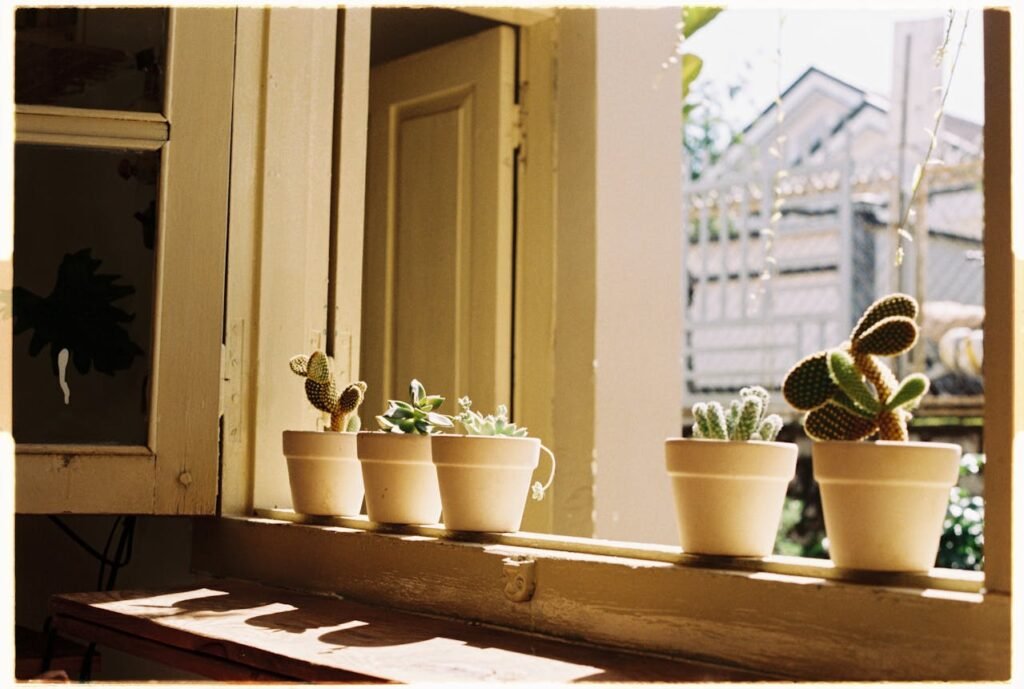
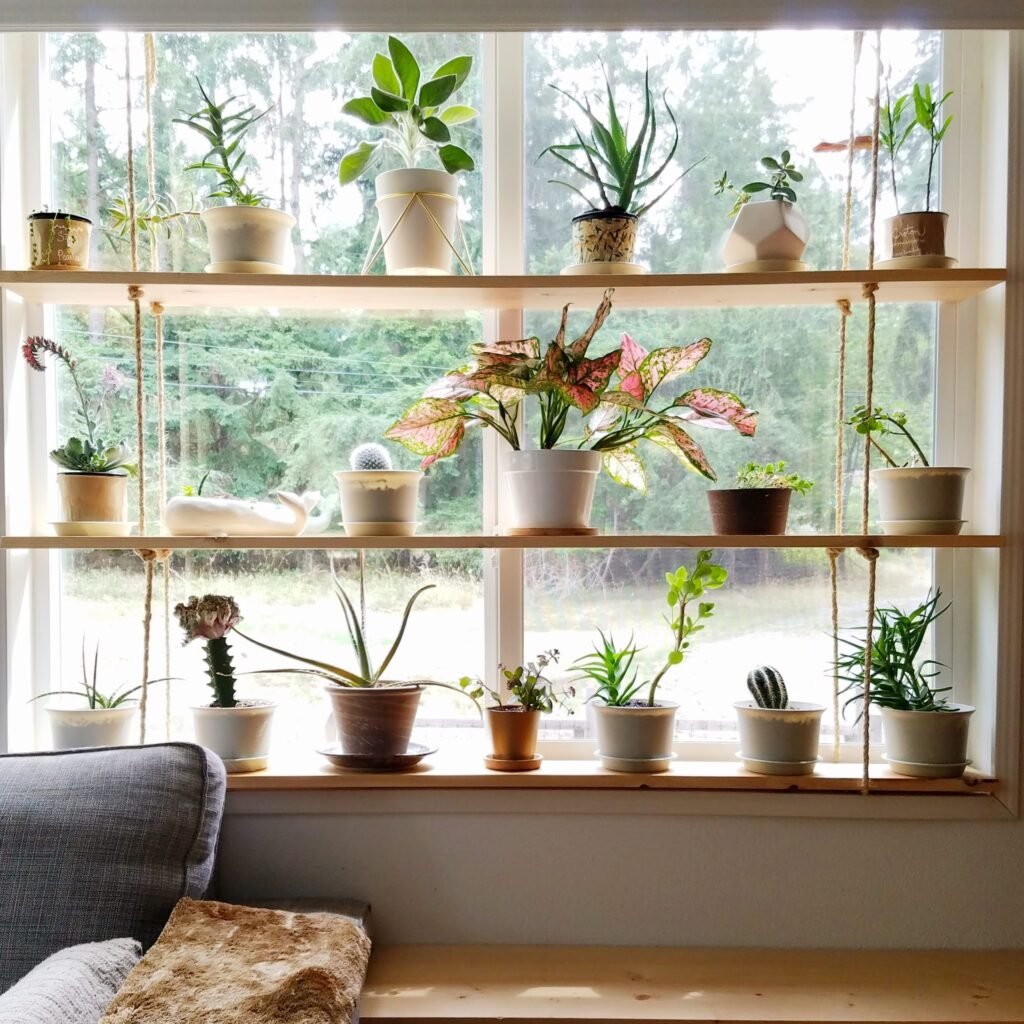
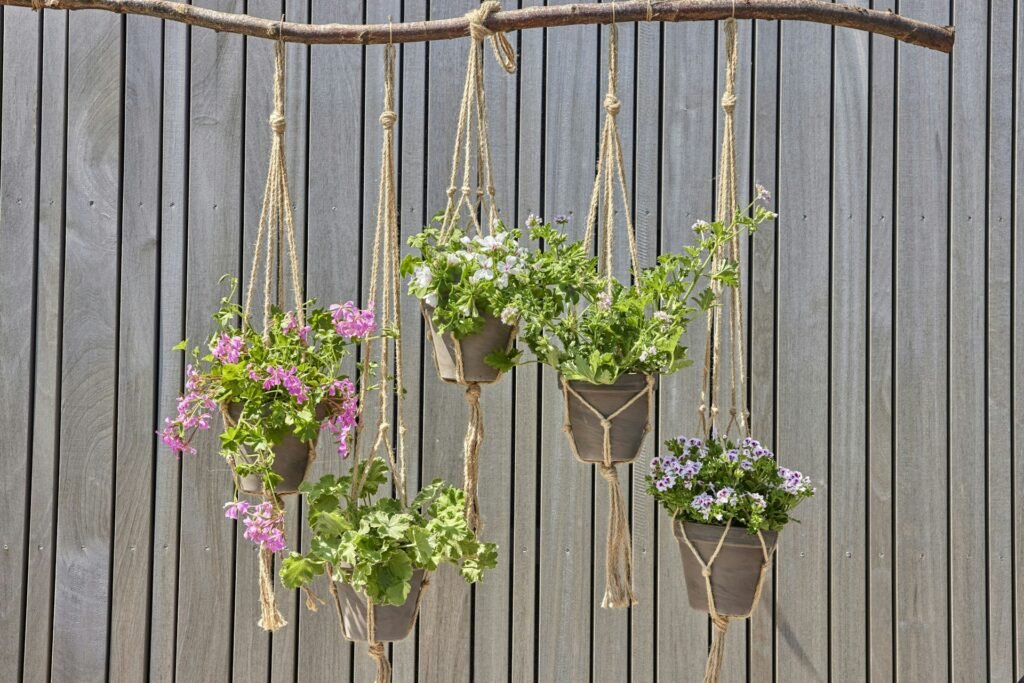

- Windowsills: South- or west-facing windows are ideal for most flowering species.
- Floating shelves near windows: Perfect for smaller plants like Mammillaria and Rebutia.
- Hanging planters: Best for trailing types like Epiphyllum and Easter Cactus.
- Bright bathrooms: Great for species needing higher humidity, like Christmas Cactus.
Caring for Blooming Cacti Indoors
Once you’ve chosen the right blooming cactus varieties, understanding their care needs will make all the difference. Indoor cactus plants may not experience the natural desert cycles, so replicating those conditions is key to getting beautiful blooms year after year.
Light Requirements for Flowering
Most blooming cacti need at least 6 hours of direct sunlight each day to encourage buds and flowers. If your home doesn’t get strong sun, a grow light can help maintain healthy growth.
Tips:
- South- or west-facing windows are best
- Avoid frequent relocation, as cacti dislike sudden changes in light
- Rotate pots every week to ensure even growth
Watering and Moisture Balance
Cactus watering is a fine balance. While many bloom in dry seasons, they still need occasional hydration to fuel flowering. Overwatering is the number one cause of rot, especially indoors.
Tips for water-smart blooming:
- Water when the top 1–2 inches of soil feel dry
- Use pots with drainage holes
- Reduce watering frequency during winter dormancy
- Use a watering can with a narrow spout for precision
Best Soil for Flowering Cacti
Cacti need fast-draining soil to prevent soggy roots and fungal issues. For flowering species, nutrients matter too.
Soil mix suggestions:
- Use a cactus potting mix or DIY blend: 2 parts potting soil, 1 part perlite or pumice
- Add a touch of organic compost for nutrient boost
- Avoid heavy, moisture-retaining soils
Fertilizing for Better Blooms
Feeding flowering cacti encourages healthy buds and repeat blooms.
Fertilizer tips:
- Use a low-nitrogen, high-phosphorus fertilizer (e.g., 5-10-10)
- Feed monthly in spring and summer
- Stop fertilizing in fall and winter to allow rest
- Liquid fertilizers diluted to half strength are best
How to Encourage More Blooms Indoors
Not all cacti bloom freely indoors—but with a few thoughtful adjustments, you can encourage more blossoms even in compact living spaces.
Light is the number one trigger. Blooming cacti need bright, direct sunlight for several hours a day. South-facing windows or grow lights can help replicate natural desert conditions.
Stress-induced blooming is also a proven method. Many cacti flower after experiencing a dry, cool period. Reduce watering slightly in winter (without letting the plant shrivel), and avoid fertilizing during dormancy. As spring returns, gradually increase light and water—this often cues the plant to produce buds.
Lastly, seasonal temperature fluctuations can stimulate flowering. Try placing your cactus in a cooler spot during winter nights (around 10–15°C or 50–59°F), mimicking natural cycles.
Understanding Dormancy: A Critical Step
Dormancy is when cacti rest and recharge, usually during fall and winter. It’s a necessary part of the blooming cycle.
How to support dormancy:
- Reduce watering to once a month or less
- Keep cacti in a cooler room (10–15°C or 50–59°F)
- Avoid fertilizing
- Allow more darkness for species like Christmas or Easter cactus
Proper dormancy ensures a burst of blooms when spring arrives!
Repotting Blooming Cacti: When and How
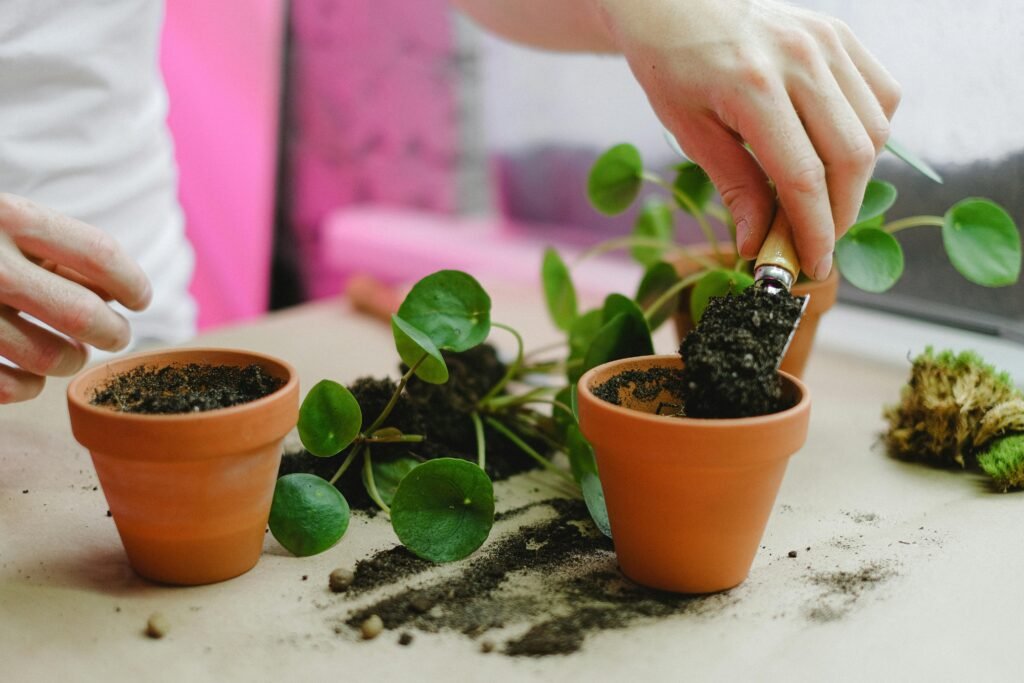
While cacti are slow growers and don’t need frequent repotting, knowing when to do it is essential—especially for blooming types.
When to repot:
- Every 2–3 years, or when the cactus becomes rootbound.
- After flowering, never during active blooming to avoid bud drop.
- Ideally in early spring before the new growth begins.
How to repot without damaging buds:
- Use gloves and tongs for prickly species.
- Gently remove the plant, keeping roots intact.
- Check for rot or pests before placing in fresh, well-draining cactus mix.
- Avoid watering immediately—let it settle for 3–5 days before light watering.
Repotting in the right season gives the cactus time to adjust and recover before blooming again.
Common Problems with Flowering Cacti
Even the healthiest indoor cactus may experience issues. The trick is to spot problems early and adjust care before it affects blooming.
Common issues and solutions:
- No blooms? Cactus may be too young or didn’t get enough light/dormancy.
- Shriveled stem? Likely under-watered—adjust watering frequency.
- Soft, mushy parts? Possible overwatering or root rot—remove affected parts and repot.
- Buds fall off before opening? Could be sudden temperature shifts or drafts.
Pest Control for Flowering Cacti
Indoor cacti aren’t immune to pests. Watch out for:
- Mealybugs – cotton-like patches
- Spider mites – fine webbing and tiny red dots
- Scale insects – hard bumps on stems
- Fungus gnats – often due to overly wet soil
Natural pest fixes:
- Wipe affected areas with alcohol-dipped cotton swabs
- Spray neem oil weekly if infestation is present
- Use sticky traps for flying pests
Do Flowering Cacti Have Fragrance?
Most indoor cacti are loved for their colorful blooms, but what about their scent?
The truth is—most blooming cacti are unscented. However, a few notable exceptions exist.
Queen of the Night (Epiphyllum oxypetalum) is famous not just for its massive white flowers but for its strong, sweet fragrance—reminiscent of jasmine or gardenia. It only blooms at night, typically once or twice a year, and the scent can fill an entire room.
Other night-blooming cereus species may also produce mild fragrance. However, daytime bloomers like Mammillaria, Rebutia, and Echinopsis usually don’t have a noticeable scent.
If you’re hoping for both visual and aromatic joy, seek out night bloomers and plan your evening accordingly—they’re worth staying up for!
Styling Tips: Displaying Blooming Cacti
Cactus blooms are nature’s art—show them off! Here are some indoor décor ideas:
- Use neutral or terracotta pots to make flowers pop
- Create a “blooming cactus corner” near bright windows
- Mix blooming cacti with green succulents for contrast
- Use macrame hangers for trailing bloomers like Orchid Cactus
- Elevate smaller pots on stands for a tiered floral effect
Best Containers for Flowering Cactus Display
Flowering cacti can become standout pieces of indoor decor—especially when paired with the right pots.
Go breathable: Terracotta pots are ideal because they allow excess moisture to evaporate. This is crucial for preventing root rot in blooming varieties.
Choose neutral tones: Let the blooms be the star. Muted ceramic or cement pots enhance vibrant flower colors without distraction.
Ensure drainage: Always choose pots with drainage holes. If you love decorative cachepots, nest a plastic pot inside for function and beauty.
Mind the size: Avoid overly large pots. Cacti like snug containers which help mimic their natural rocky homes—and can even promote blooming by slightly stressing the plant.
FAQs About Blooming Cactus Varieties
How long do cactus flowers last?
Depends on the species. Some last one day (e.g., Echinopsis), others can bloom for weeks (e.g., Christmas cactus).
Do all cacti bloom?
Yes, but only under the right conditions. Age, light, and dormancy are crucial.
Can I force a cactus to bloom?
Not exactly—but giving it the right care (light, dormancy, nutrients) increases your chances.
How old does a cactus need to be to flower?
Most start blooming around 3–5 years of age, depending on the species.
Is indoor cactus blooming common?
Yes, with proper lighting and care, many varieties bloom beautifully indoors.
Final Thoughts: Bringing Color to Your Home
Cactus blooms bring a sense of wonder—whether it’s a sudden night flower or a ring of pink blossoms in spring. With the right care and species selection, you can turn your home into a miniature blooming desert.
These blooming cactus varieties for home are not only easy to care for but also incredibly rewarding. Once you witness your first bloom open, you’ll never look at cacti the same way again.
Whether you’re a beginner or a seasoned plant lover, these stunning varieties offer beauty, resilience, and a burst of joy in any indoor space.
